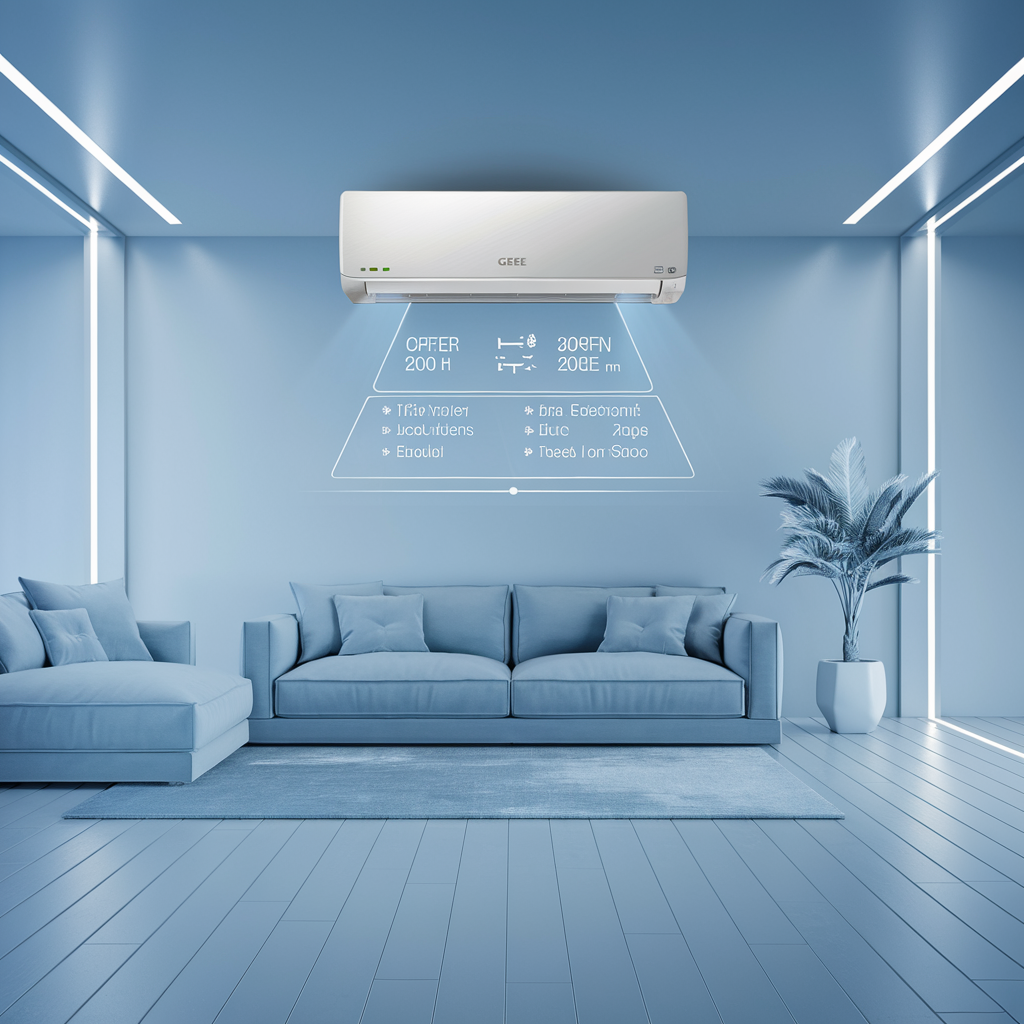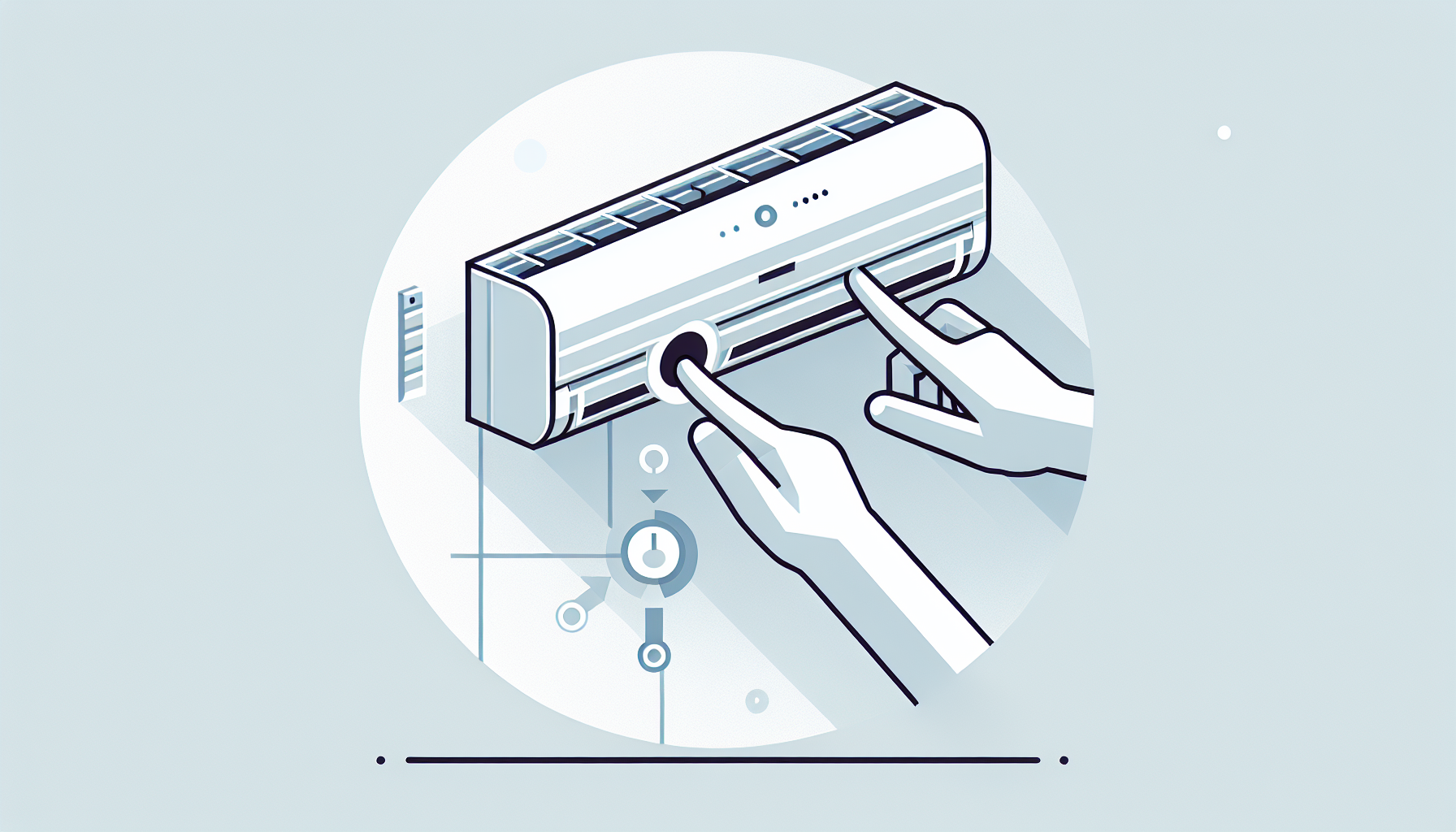Troubleshooting Common Issues
When your Gree mini-split isn’t acting right, cracking the code on those error messages can make the fix seem less mysterious. Here’s a simple rundown to help you out.
Understanding Error Codes
These error codes are like your system’s way of telling you what’s up. For example, E1 and E3 usually mean your filters are as clean as a teenager’s bedroom. Ignoring that can snowball into bigger messes that only a professional can clean up. Get the lowdown on codes from GREE Comfort.
Common Error Codes
| Error Code | Indication |
|---|---|
| E1 | High-pressure protection (dirty filters, usually) |
| E3 | Low-pressure protection (also likely dirty filters) |
| E4 | Compressor high discharge temp protection |
| E7 | Needs a checkup on both indoor and outdoor units |
That E7 code means both parts need to be on the same page mode-wise to work right (JustAnswer).
Cleaning Filters for E1 and E3 Codes
Seeing E1 or E3? Your filters might be crying out for a scrub. When they’re grimy, airflow takes a nosedive, causing the unit to sweat or slack off. Here’s how to give them a proper cleanup:
- Switch off the unit — safety first, folks!
- Pop out the filter following the manual’s lead.
- Wash it up with warm, soapy water. Give it a good rinse and wait till it’s completely dry.
- Slot it back in snug and secure.
If the errors won’t bug off after that, it’s definitely time for HVAC heroics from a pro.
Sensor Malfunctions with F-Series Codes
F-series codes mean your mini-split thinks its sensors have ghosted. Here’s the breakdown:
| Error Code | Sensor Type |
|---|---|
| F1 | Indoor sensor |
| F2 | Indoor evaporator sensor |
| F3 | Ourdoor sensor |
| F4 | Outdoor tube sensor |
| F5 | Discharge sensor |
Got an F-series issue? You’ll want to ring up a tech wizard to sort it out.
Keeping up with regular TLC and nipping issues in the bud makes your system hum along nicely. Got problems like leaky drips or strange sounds? Check out our other tips ready and waiting just for you.
Additional Error Code Insights
Trying to crack the mystery of those little codes on your Gree mini split? Understanding these error codes can be a game-changer to get things back to normal. Let’s break down what C5, U3, L9, E4, E6, and E7 error codes mean in plain terms.
Decoding C5, U3, and L9 Codes
So, you’ve got a Gree mini-split flashing a C5, U3, or L9 code? Here’s what that’s all about:
| Error Code | What It Means |
|---|---|
| C5 | This one’s pointing fingers at the temperature sensor. It might be acting out. |
| U3 | The units aren’t chatting nicely. There’s a communication hiccup. |
| L9 | Something in there isn’t working right, likely a key component misbehaving. |
These codes are like your mini-split’s SOS signals. Check out your trusty user manual for what to do next.
Dealing with E4 and E6 Errors
You don’t want to mess around with E4 and E6 codes. Here’s what’s up:
-
E4 Error Code: This is a warning that the compressor’s about to overheat because the outdoor unit’s temperature got too high. It politely shuts things down to avoid damage (JustAnswer).
-
E6 Error Code: Here, communication has completely broken down between the indoor and outdoor units. If flicking the switch and waiting 10 minutes doesn’t help, it probably means a main board is acting up in one of the units.
Investigating the E7 Code
The E7 error code is your system’s way of saying something’s off. Double-check that both the indoor and outdoor units are set to the same mode, like both cooling or both heating. A mismatch can cause things to go haywire. Your model’s manual should have more detailed troubleshooting steps, or you can peek at resources on split ac indoor unit making noise for more help.
Spot these codes early, and you’ll sidestep a lot of headaches with your Gree mini-split. And hey, if it still won’t cooperate after you’ve tried everything, it might be time to call in a professional.
Preventive Maintenance Tips
Taking care of your GREE mini-split system helps you dodge troubles like the pesky E7 code. Here’s some preventative advice to keep that portable AC humming along.
Regular Inspection and Cleaning
A quick look-see and scrub now and then can work wonders by keeping dirt at bay and leaks in check. A tidy system runs better and sticks around longer. Make sure you check these vital spots:
| Maintenance Task | How Often |
|---|---|
| Clean or swap out filters | Monthly |
| Peek at the drainage system | Monthly |
| Hunt for leaks | Every 3 months |
| Check indoor and outdoor units for grime | Every 3 months |
Doing maintenance on the regular boosts the lifespan and efficiency of your mini-split.
Mode Consistency Check
Make sure all of your mini-split units are on the same page when it comes to settings. If they’re out of sync, they might not work as efficiently as you’d like. Here’s what to look out for:
| Mode Setting | Purpose |
|---|---|
| Cooling | For those sweltering days |
| Heating | When the chill sets in |
| Fan | Just to keep the air moving |
Keeping the modes in harmony helps you sidestep hiccups that might cramp performance or hike up energy use. Regular checking is your friend here.
By sticking to these tips, you’ll dodge most of the typical issues with your AC and keep it working its magic. If things go awry, you might want to check out some fixes for portable AC compressor not turning on or common problems with Delonghi portable air conditioners.
Professional Assistance and Tips
Role of HVAC Pros
When things go sideways with your GREE mini split, calling in the HVAC pros can be a game-changer. These folks have got the savvy to decode those pesky error codes and fix things up right. Take the E7 code, for instance—it signals a hiccup needing a deep dive into both the indoor and outdoor units.
Having regular check-ups from the HVAC crowd is a life-saver for your cooling setup. It nips dirt buildup and leaks in the bud, keeping everything humming along. Their know-how makes sure your system is working on all cylinders.
| Service | How Often | What’s In It for You? |
|---|---|---|
| Routine Maintenance | Twice a year | Stops gunk buildup, keeps things efficient, spots issues before they escalate |
| Pro Inspections | Once a year | Deep dive into tech issues and possible repairs |
| Emergency Help | When things hit the fan | Fast fixes to keep downtime low |
DIY Tricks & Tips
If you’re the type who likes to roll up your sleeves, knowing a few tricks for your GREE mini split might save the day. Error codes starting with ‘F’ could mean sensor problems, which you can figure out before ringing up the experts.
Say you bump into the E4 error—the system’s telling you the compressor’s running too hot. That’s a job for someone with the right tools, so you might need to bring in a tech guru (JustAnswer).
Then there’s E7, the troublemaker. It’s about making sure the inside and outside units are on the same page. Setting both to the same mode could do the trick.
For future reference or more home hacks, check out some extra reads like common issues with delonghi portable air conditioner and why does my portable ac keep filling up with water. Staying in the loop is your best bet for keeping cool!




